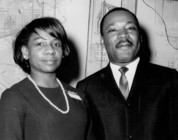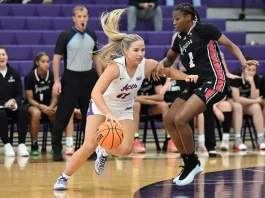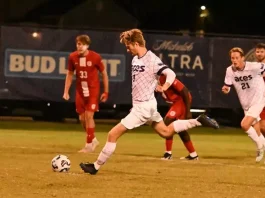February 7 – February 13The Week in Indiana History |
|||||||||||||||
   “And you just knew without a doubt that we were going to be free! You just knew it! And two days before our time was up, the word came: ‘It’s over! It’s over! The Civil Rights Bill had passed Congress!'” Marguerite Graves (1933 -2019) Did You Know?
Marguerite Graves with Dr. Martin Luther King, Jr. February is Black History Month    Marguerite Graves of Indianapolis made history. As a young African American woman in the 1960s, she didn’t just read about the Civil Rights Movement, she joined it. After graduating from Crispus Attucks High School, she moved to Los Angeles. There she joined Dr. Martin Luther King’s Southern Christian Leadership Conference. This led to her first meeting with the civil rights leader. The two found that they had a good deal in common.  “We had both been to Liberia,” she said, “and we both were deeply interested in the future of that African country.” In the summer of 1964, Marguerite found herself on a 2200-mile Greyhound bus trip to Americus, Georgia.  Her group marched two and three times a day in Americus. They paraded in front of government buildings. They sat in front of stores. That same summer, Congress passed the historic Civil Rights Bill. Marguerite returned to Los Angeles to continue her work in the Civil Rights Movement. A few years later, she was back home in Indianapolis, but she wasn’t finished with making history. She and associates established their own Hallmark store on West Washington Street. This was one of the first such stores to be owned by African American women. ANSWERS: 1. Jimmy Hoffa  2. James Dean 3. Florence Henderson 4. Wendell Willkie |
|||||||||||||||


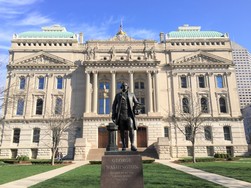
 1865   Indiana ratified the 13th Amendment to the United States Constitution. The measure abolished slavery in the nation. The General Assembly was prompt in approving the legislation, making Indiana one of 18 states to ratify the amendment in the first month. The adoption became official for the nation in December of 1865.
1865   Indiana ratified the 13th Amendment to the United States Constitution. The measure abolished slavery in the nation. The General Assembly was prompt in approving the legislation, making Indiana one of 18 states to ratify the amendment in the first month. The adoption became official for the nation in December of 1865.

 1931   E. E. Miller, chief of the Richmond, Indiana, Fire Department, died while battling a fire in a city home. Called “The Dean of Indiana Fire Chiefs,” he had served as chief for 25 years. During much of that time, for a city its size, Richmond had one of the nation’s lowest rates of fire losses. Miller was also known for establishing the firefighter project of repairing broken toys for distribution to underprivileged children at Christmas time.
1931   E. E. Miller, chief of the Richmond, Indiana, Fire Department, died while battling a fire in a city home. Called “The Dean of Indiana Fire Chiefs,” he had served as chief for 25 years. During much of that time, for a city its size, Richmond had one of the nation’s lowest rates of fire losses. Miller was also known for establishing the firefighter project of repairing broken toys for distribution to underprivileged children at Christmas time. 1958   Indiana University drama student Richard Brown, dressed as Abraham Lincoln, stood near the northwest corner of Washington and Illinois Streets in Indianapolis. There, at the site of the old Bates House Hotel, he reenacted the speech Lincoln had given from the hotel balcony on his way to inauguration 97 years earlier. Governor Harold W. Handley introduced Brown, just as Governor Oliver P. Morton had introduced Lincoln in 1861.
1958   Indiana University drama student Richard Brown, dressed as Abraham Lincoln, stood near the northwest corner of Washington and Illinois Streets in Indianapolis. There, at the site of the old Bates House Hotel, he reenacted the speech Lincoln had given from the hotel balcony on his way to inauguration 97 years earlier. Governor Harold W. Handley introduced Brown, just as Governor Oliver P. Morton had introduced Lincoln in 1861.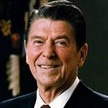 1982   President Ronald Reagan was at the Indiana Statehouse to speak to the General Assembly. In his address in the chamber of the House of Representatives, he spoke about the new federalism policy which would return authority in many areas back to individual states. The President was welcomed to the city by Governor Robert D. Orr and Mayor William Hudnut.
1982   President Ronald Reagan was at the Indiana Statehouse to speak to the General Assembly. In his address in the chamber of the House of Representatives, he spoke about the new federalism policy which would return authority in many areas back to individual states. The President was welcomed to the city by Governor Robert D. Orr and Mayor William Hudnut.

